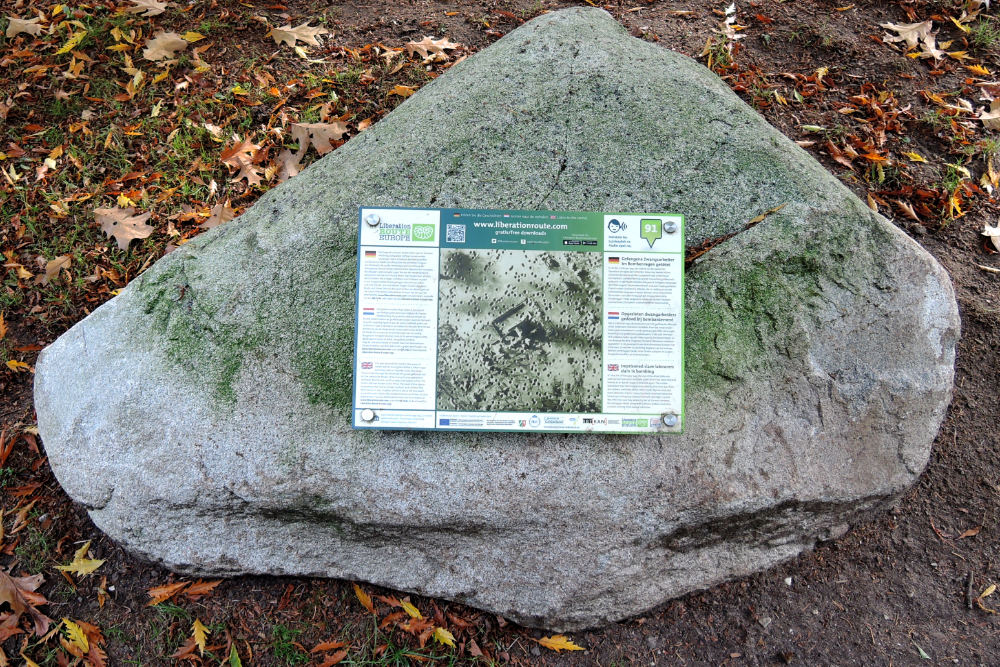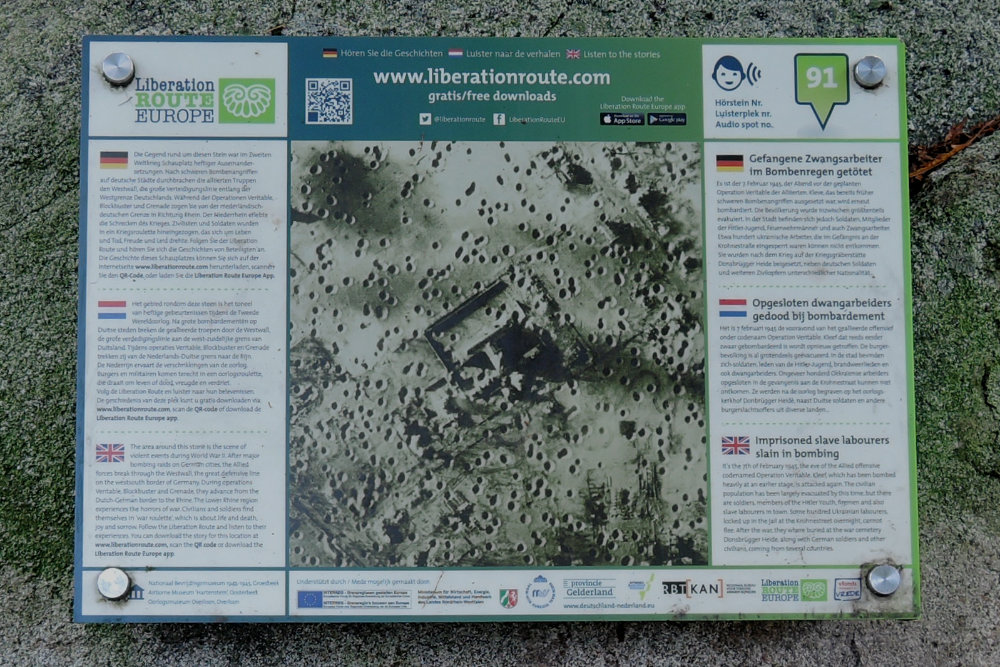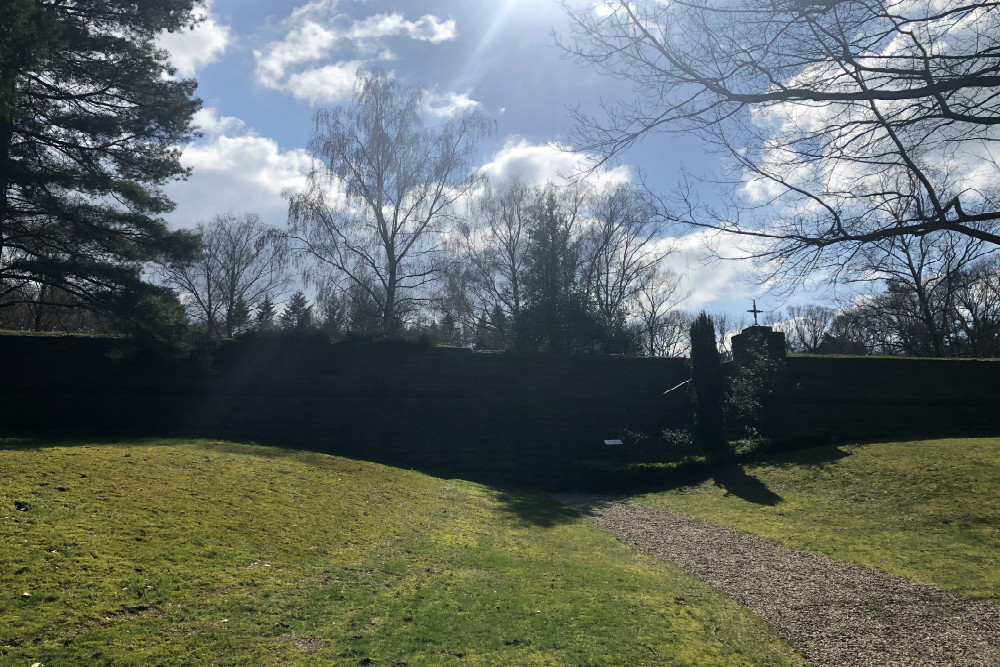Liberation Route Marker 091: Imprisoned slave labourers killed during bombing
Imprisoned slave labourers killed during bombing
It is the 7th of February 1945, the eve of the allied offensive codenamed Operation Veritable. Kleve, which had been subjected to heavy bombing earlier in the war, is bombed again. The Upper Town is severely affected. The civilian population has been largely evacuated. In the town, there are soldiers, members of the Hitler Youth, fire-fighters and many Ukrainian slave labourers. A hundred of them are locked up behind bars in the prison on the Krohnestrasse. They do not survive the attack.
The British plan for a major offensive from Nijmegen towards Wesel was resumed in early 1945. Operation Veritable was planned to begin on the 8th of February. On the 7th of February, literally on the eve of the operation, Kleve is again heavily bombed.
This time mainly the Upper Town is hit hard. In principle, the civilian population had been evacuated, but among others, there are still soldiers, members of the Hitler Youth (a number of whom were killed in a cellar under the former home of the shoe manufacturer Gustav Hoffman) and fire-fighters. Moreover, that night, there are many slave labourers from the Ukraine locked in cells in the prison on the Kronestrasse. They had been recently deployed to recover the bodies of people killed during the first major bombardment, clearing debris and constructing defences. During this night, about a hundred of these slave labourers died tragically in the cells. They are buried in the Kriegsgräberstätte, which is much more than just a military cemetery. The cemetery was dedicated in 1950 as a central cemetery for war victims from the Kleve area including civilians.
Audiospot - Imprisoned slave labourers killed during bombing
Liberation Route Europe is a certified Cultural Route of the Council of Europe. With hundreds of sites and stories in nine European countries, the route links the main regions along the advance of the Allied Forces in 1943-1945.
The entire route consists of themed routes that can be travelled by by hiking, walking, cycling and car. These routes pass numerous historical and interesting sites and tell stories from a multitude of perspectives that were important in the final phase of World War II.
Many routes feature listening spots, offering the opportunity to listen to a historical story at a location. In addition, many ‘Vectors of Memory’ have been placed, indicating that the passer-by is on one of the Liberation Routes.
The routes can be found on the Liberation Route Europe website or in the app through which many stories can also be listened to.
Do you have more information about this location? Inform us!
Source
- Text: TracesOfWar & Liberation Route Europe
- Photos: Jos Birx
Nearby
Museum
Point of interest
- Information Sign Bombing 07-02-1945 Kleve - Kleve (Donsbrüggen)
- Location Knickebein Radar Kleve - Kleve
- Castle Schwanenburg Kleve - Kleve
Monument
- Memorial Victims Eastern Front German War Cemetery Donsbrüggen - Kleve (Donsbrüggen)
- War Memorial Donsbrüggen - Donsbrüggen
- War Memorial Nütterden - Nütterden
Cemetery
- German War Cemetery Kleve-Dönsbrügger Heide - Kleve (Donsbrüggen)
- German War Graves Kleve - Kleve
- Commonwealth War Cemetery Reichswald Forest - Kleve
Remembrance Stone
- Stumbling Stones Brabanterstrase 24 - Kleve
- Stumbling stones Römerstrasse 28 - Kleve
- Stumbling Stones Tiergartenstraße 24 - Kleve
Fortification
- Fort Pannerden - S3a - Casemate 1 - Doornenburg
- Fort Pannerden - Szw Fr - Casemate 2 - Doornenburg
- Fort Pannerden - Szw Fr - Casemate 7 - Doornenburg







